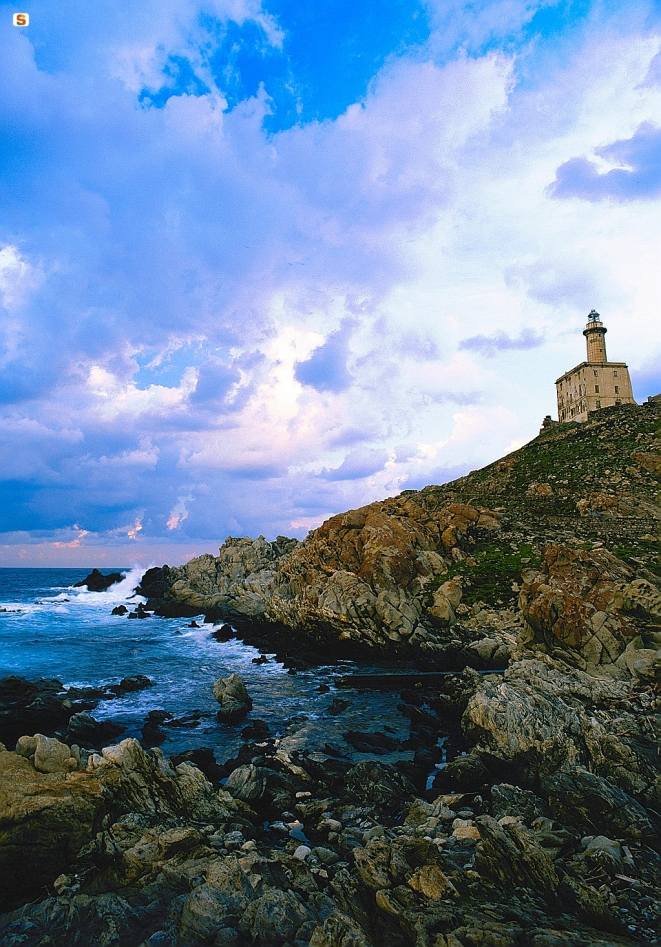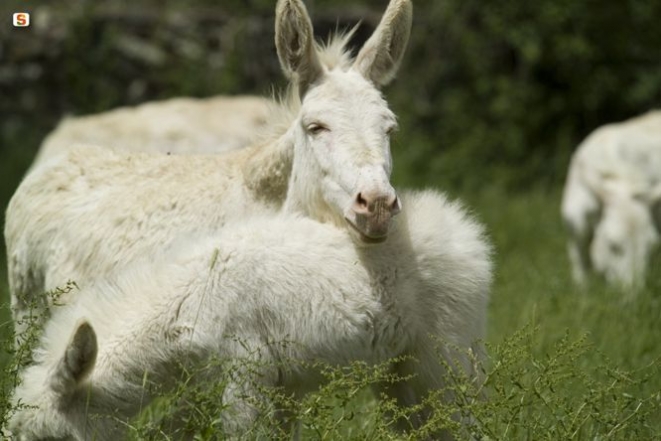The National Park of Asinara
From high security prison to tourist paradise
Island in an island, Asinara is constantly swept by the wind and tormented by the sea in movement that has molded, over the millennia, the coasts. Ancient land, recent studies have highlighted a Hercynian suture (Carboniferous, first half of the Paleozoic) along the Asinara - Posada line that date back the rocks 950 million years ago. Its history is lost in the mists of time, therefore, from which draws one legend describing it as the island of Hercules, the Herculis Insula, where it seems he passed by in his adventurous journey to the West.

It seems certain that the island was inhabited in the Neolithic period considerated the discovery of bits of obsidian and flint in Punta Campu Perdu and Capo Faro, with at a short distance, the Domus de Janas, hypogean tombs. Certainly, the Romans frequented it during the colonization of the north of Sardinia and you can still see through the water clear air in front of Cala Reale, numerous jars scattered in the bottom and the wreck of a ship.
It was precisely the Romans who gave it the name of Sinuaria, hence probably the name Asinara, because of its many creeks that served as a shelter along the route to France. Later inhabited by Sardinian shepherds and Ligurian fishermen who found a cozy environment where there was no lack of sustenance. In 1885, this colony of about five hundred people was forced to leave to make way for an agricultural penal colony and a health quarantine point.

Then the real isolation for this piece of land began, once joined Stintino in a long peninsula, which later became, together with Porto Torres, a port. The penal colony lasts until 1997, when it turns into a National Park. A century of island-prison have allowed it to protect itself from the invasion and exploitation that uncontrolled tourism, however, other neighboring coastal havens have had to endure. The reality today is that of the National Park and the Marine Protected Area "Isola dell'Asinara" that return this place so full of natural and human memory to the community to which it belongs. A jewel to be treated with care in which a protocol of behavior and strict rules that prevent that the enthusiasm of its rediscover will turn in a downfall.
The Park Authority that manages and organizes visits establishes harshly entrances and mode of use of its beauties. Despite this rigidity, the island is very popular because its riches are such and so many that it is impossible, being in this area, not go there. In addition to wild nature by the colors of the Mediterranean and Fornelli, Sant'Andrea, La Reale, Trabuccato, Punta Sabina, Cala Arena beaches in the east coast, it is home for endemic species of flora and fauna such as the Centaurea horrida or prickly cornflower, protected the Berne Convention, or the Sardinian hare, barn owls and other animals of Sardinia by extraordinary names: the flycatcher, the black bunting, the dormouse and the rare Corse gull or the peregrine falcon.
But Asinara island is famous for the presence of white donkeys with the eyes between pink and blue, delicate and strange, small, fragile, photophobic, so that, by day, they move insecure and seek shelter from the sun that in summer reaches very high temperatures. Also the mouflons live among rocks and bushes of the island, not to mention the feral goats that climb high in the western cliffs.
The sea provides the divers a spectacle that takes place almost undisturbed in front of his eyes. Oceanic posidonia guarantee the oxygenation of the water and therefore the life of many species of fish, from sea bass and sea bream, mullets, octopuses and lobsters for which however you have to dive very deep. Even the sumptuous brown groupers live serene here, to the north of the island. The waters around the island are also preferred by cetaceans such as whales and sperm whales until the sea of Asinara has been included in the Cetacean Sanctuary international project.
So, visiting the island becomes a brilliant experience from the many facets: natural and social history, geological heritage, natural heritage, sports on land and at sea, relaxing on the beach, nature observation, environmental education and model of protection of the nature. All this is possible thanks to the operators of the Park that guide visitors in their tours. You should visit the site www.parcoasinara.org a treasure trove of valuable information.
By the way, in Asinara you can also eat and sleep, you just need to plan date and book. Beware of the weather: for most of the year the sea is roughed up by the west wind and the mistral that make it particularly attractive and spectacular the west coast, while to the east, although the calm sea does not exist so often, the beaches are certainly more accessible (where you can) that slope gently up to 50 meters deep. But moving along the paths of the inland could be the best way to discover a land of detention and punishment that has turned into an island of joy and freedom.